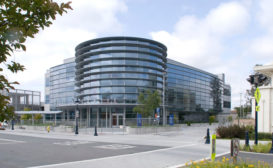Health Care Design
Penn State Hershey Cancer Institute
A building's design expresses and supports its client's mission of blending research and treatment.
Read More
Vivian and Seymour Milstein Family Heart Center
A beautifully daylit infill addition between a hospital and an office building harvests precious space for diagnostics, treatment, and surgery.
Read More
Santa Clara Valley Specialty and Health Centers by Anshen + Allen
County of Santa Clara, California
October 16, 2010
St. Anthony Hospital
Zimmer Gunsul Frasca Architects' hospital and medical office building avoids an institutional look through natural materials and evidence-based design.
Read More
The Children's Hospital
Whimsical art and carefully selected colors creates a hospital refuge for young patients.
August 1, 2010
Southwest Washington Medical Center, E.W. and Mary Firstenburg Tower
Single-occupancy patient rooms and landscaped pathways designed to support human healing.
August 1, 2010
Sherbourne Health Centre
Innovative design creates a healing haven for the homeless.
August 1, 2010
Ronald Reagan UCLA Medical Center
This medical center is designed to withstand an 8.0-plus magnitude earthquake.
August 1, 2010
Copyright ©2024. All Rights Reserved BNP Media.
Design, CMS, Hosting & Web Development :: ePublishing


